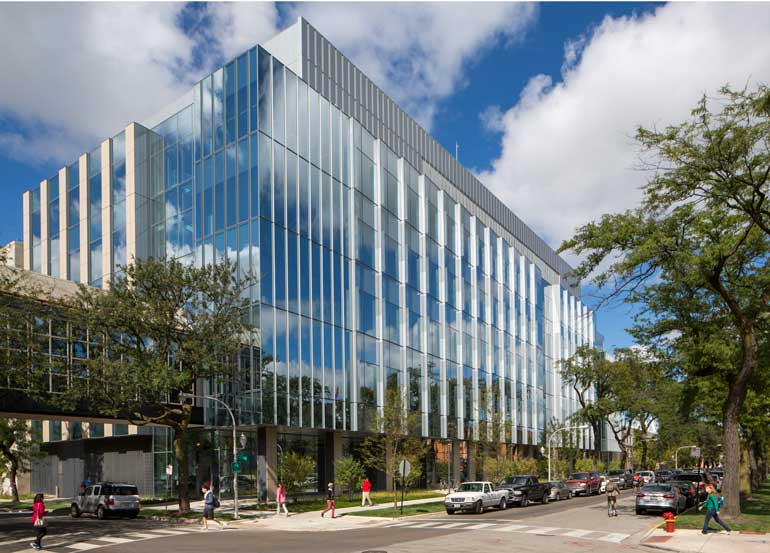This is the second installment of a series on student housing, the third of which will be published May 6.
Only slightly more than 50 percent of undergraduates live in University housing, lagging behind most peer institutions. This relatively low percentage is both a reflection and product of the history of on-campus housing. The University’s current push to increase the percentage of students in housing, led by Dean of the College John Boyer, is intertwined with the historical lack of housing for undergraduates.
A past perspective
According to Boyer’s 2009 paper,“‘The Kind of University That We Desire to Become’: Student Housing and the Educational Mission of the University of Chicago,” throughout much of its history the University existed as a commuter school. It was only in the 1950s that the College began to seriously recruit students from across the country, and for many years the University bought old buildings and refurbished them rather than build new residence halls.
Boyer cited a 1927 plan for an undergraduate campus south of the Midway, which would have housed 2,000 students, as his inspiration. Of this plan, which included office and classroom space as well as dormitories, Burton-Judson Courts was the only building constructed.
Residence halls, past & present
Alumnae living in dorms both decommissioned and still in use shared experiences of the community that developed in different houses despite a lack of emphasis on housing by the University.
Abe Amidor (A.B. ’69) lived in Pierce Tower, which was built quickly to house more students. He described it as “noisy, crowded, and too small.”
Keith Weissman (A.B. ’76, A.M. ’78, Ph.D. ’90) described a more close-knit house system that he experienced through his girlfriend whom he later married, a Resident Assistant (RA) in Woodward Court, located at 58th Street & Woodlawn Avenue. His girlfriend’s Resident Masters insisted on meeting him to see if he was worthy of dating one of their RAs, and her residents had a keen interest in their relationship.
Hugo Ahn (A.B. ’82) who lived in Vincent House in Burton-Judson (BJ) and then the Shoreland for two years, described his time in BJ as a “fraternity experience” because it was an all-male dorm then. He stayed in University housing all four years for “convenience, security, and reliability.”
Experiences of recent alumnae
Alumnae from more recent years also discussed the strength of their house cultures amid often-shoddy dorms.
Steven Cicala (A.B. ’04) lived in Woodward Court when it was slated for demolition.
“The facilities were terrible, people were a lot of fun, but it was the one year I was in undergraduate housing,” he said.
Renee Gerber (‘04) who also lived in Woodward Court, explained that when she was an undergraduate the housing lottery set quotas on how many upperclassmen could live in specific dorms to reserve them for underclassmen. This was part of the University’s historical policy of tailoring housing for underclassmen, often at the expense of upperclassmen. After moving to Max Palevsky her second year, she received a low lottery number and could not stay in Palevsky, so she moved off-campus.
“The House culture was definitely the best part and certainly a big deal…. It backfired a little; if you instill a good house culture people don’t want to leave,” she said in reference to the quota on upperclassmen.
The push for more undergraduates in housing
In his 2009 paper Boyer outlined three goals for University housing: 70 percent of students on-campus, construction of two to three new residence halls, and the retention of more upperclassmen.
One of those residence halls is in the process of being built, but plans for others are up in the air. “Right now there are no other concrete plans to build any other residence halls. I do hope we’ll be able to sooner rather than later be able to build one large hall that will have the same design quality and similar amenities for students…. that would get us pretty close to 70 percent if some of the students want to move back voluntarily,” he said.
Boyer believes building dormitories is crucial to attracting more students, particularly upperclassmen, to housing.
“The way to fight a party is to throw a better party, not to cancel it. I’ll bet you that the day [North Campus dormitory] opens we’re gonna have third – and fourth-year kids lined up around the block…. I’m pretty confident that if we can build it, they will come,” he said.
The Maroon is committed to understanding all aspects of on- and off-campus housing. If you or someone you know has interesting experiences relating to housing, please contact smanhardt@uchicago.edu.









